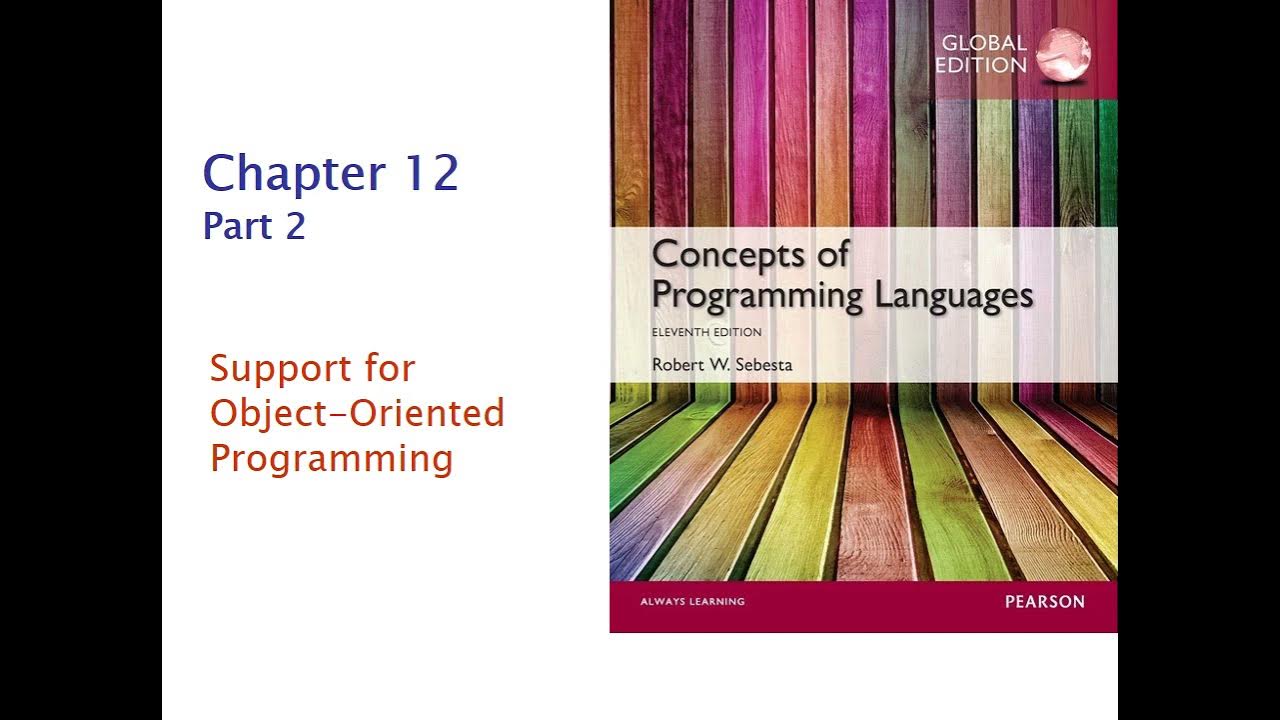39. OCR A Level (H446) SLR7 - 1.2 Object-oriented languages part 4
Summary
TLDRThis video concludes a four-part series on object-oriented programming (OOP), focusing on polymorphism. It explains static and dynamic polymorphism, with examples in Python showing how the same operator or method can behave differently depending on context. The video also demonstrates dynamic polymorphism in inheritance hierarchies, where subclasses override superclass methods. Finally, it briefly touches on the evolution of OOP, highlighting its current challenges and the rise of functional programming as a more maintainable alternative. The content prepares viewers for exams and offers insights into OOP’s historical context.
Takeaways
- 😀 Polymorphism means the ability for something to occur in many different forms, derived from the Greek word for 'many forms'.
- 😀 There are two main types of polymorphism in object-oriented programming: static and dynamic.
- 😀 Static polymorphism is achieved through method overloading, where methods share the same name but differ in parameters (number, type, or order).
- 😀 Dynamic polymorphism occurs when a subclass overrides a method from its superclass to provide specific behavior, enhancing flexibility in code.
- 😀 The '+' operator in Python can behave differently based on the types of operands, showcasing an example of polymorphism.
- 😀 In the case of method overloading, methods with the same name can have different parameters, which is useful in some programming contexts but not directly tested in exams.
- 😀 Dynamic polymorphism is commonly tested and focuses on the overriding of superclass methods by subclasses in inheritance hierarchies.
- 😀 The example with birds (e.g., Duck, Crow, Canary) demonstrates dynamic polymorphism, where each subclass provides a different implementation of the `make_sound()` method.
- 😀 The concept of polymorphism allows one method to behave differently depending on the object it's called upon, making code more reusable and adaptable.
- 😀 Although OOP was highly popular in the late 90s, it has faced criticism for leading to complex and difficult-to-maintain systems, with functional programming gaining traction as a simpler alternative.
Q & A
What is polymorphism in object-oriented programming?
-Polymorphism in object-oriented programming means something that occurs in several different forms. It allows one action to take different forms depending on the context, such as the '+' operator working as string concatenation or addition depending on the data types.
What are the two main types of polymorphism in object-oriented programming?
-The two main types of polymorphism in object-oriented programming are static polymorphism and dynamic polymorphism.
Can you give an example of polymorphism in Python?
-Yes, an example of polymorphism in Python is the '+' operator, which behaves differently depending on whether it is used with strings (concatenation) or integers (addition).
What is static polymorphism?
-Static polymorphism allows you to implement multiple methods with the same name but different parameters within the same class. This is known as method overloading, where methods can differ by the number, type, or order of parameters.
What is dynamic polymorphism?
-Dynamic polymorphism occurs when a subclass overrides a method from its superclass, allowing the subclass to customize or completely replace the behavior of the method. The method names and parameters remain the same, but the functionality differs.
What is method overloading, and how does it relate to static polymorphism?
-Method overloading is a form of static polymorphism where multiple methods with the same name are implemented in a class but differ in the number, type, or order of parameters. This allows a method to behave differently depending on its inputs.
How does dynamic polymorphism work in inheritance hierarchies?
-In inheritance hierarchies, dynamic polymorphism allows a subclass to override a method of its superclass. When the method is called, the implementation of the subclass is used, providing different functionality based on the type of object.
What is the significance of the 'make sound' method in the bird example?
-The 'make sound' method in the bird example demonstrates dynamic polymorphism. Different subclasses (Duck, Crow, Canary) override this method to produce different sounds ('chirp', 'quack', 'squawk', 'tweet') depending on the type of bird object.
Why is inheritance important in dynamic polymorphism?
-Inheritance is essential in dynamic polymorphism because it allows a subclass to inherit a method from its superclass and then override it with its own specific implementation, enabling different behaviors for the same method name.
What does the video suggest about object-oriented programming (OOP) in modern software development?
-The video mentions that although OOP was once dominant, it is now considered a bloated system that can lead to difficult-to-maintain programs, especially for large projects. Functional programming is gaining popularity as a safer and more stable approach for maintaining code.
Outlines

This section is available to paid users only. Please upgrade to access this part.
Upgrade NowMindmap

This section is available to paid users only. Please upgrade to access this part.
Upgrade NowKeywords

This section is available to paid users only. Please upgrade to access this part.
Upgrade NowHighlights

This section is available to paid users only. Please upgrade to access this part.
Upgrade NowTranscripts

This section is available to paid users only. Please upgrade to access this part.
Upgrade NowBrowse More Related Video

COS 333: Chapter 12, Part 2

Object-oriented Programming in 7 minutes | Mosh

Lec 3: OOPs Concepts in C++ | Object Oriented Programming Pillars | C++ Tutorials for Beginners

Lec 2: What is Object Oriented Programming (OOP) | POP vs OOP | C++ Tutorials for Beginners

Dasar PBO Python #6 - Konsep Class Polymorphism

Object Oriented Programming - The Four Pillars of OOP
5.0 / 5 (0 votes)